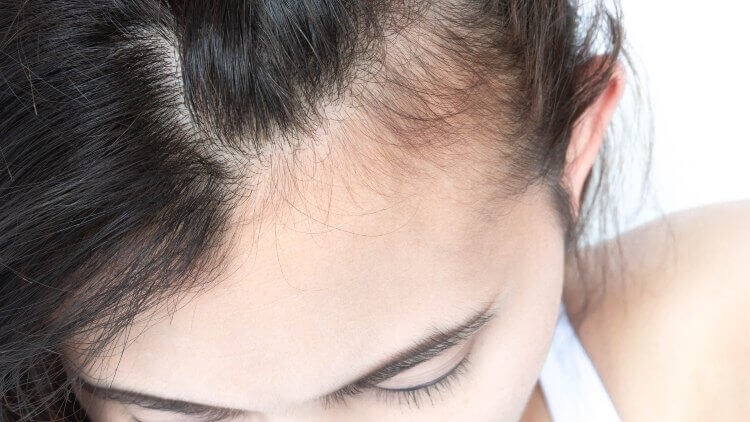Reasons For Hair Loss in Women
&srotate=0)
If you’re a woman and have noticed your hair thinning, you’re not alone. According to Mayo Clinic , “About 55 percent of women experience some hair loss by the age of 70. The most common cause is female-pattern baldness, an inherited condition. It's characterized by gradual thinning of your hair, which may be noticeable as a widening part or a ponytail that's less hefty than it used to be.” And there are other causes besides aging.
Signs of hair loss include:
- Hairs break off when brushing
- Ponytails feel less thick
- More hairs fall out daily in showers, on your pillows, or in the sink.
- Patches of thin or missing hair. The part in your hair may appear wider than before.
- More scalp skin showing through hair.
Here are some causes and types of hair loss:
- Restrictive diets
- Vitamin deficiency
- Hair treatments involving harsh chemicals or high temperatures
- Pulling hair too tight (braids, tight ponytails) can cause follicle damage called traction alopecia
- Harsh medical treatments such as radiation and chemotherapy
- The autoimmune skin disease alopecia areata causes temporary patchy hair loss, primarily on the scalp
- Genetic predisposition - If your older female relatives have significant hair loss, you’re at higher risk of developing it as well
- Hormone changes from pregnancy, menopause or birth control pills
- Blood pressure medicines, gout medicines and high doses of Vitamin A
- Abnormal thyroid conditions
- Severe emotional stress: grief, mental illness, etc
- Severe physical stress or shock can cause temporary hair loss. This category includes events like losing a lot of weight, surgery, anemia, illness and having a baby. Examples include car crashes, surgeries, extreme weight loss, severe illness, difficult childbirths or anemia.
Treatments for hair loss depend on what kind of hair loss you have. They include:
- Pharmaceuticals such as minoxidil or finasteride
- Volumizing products such as conditioner or mousse
- Wigs or hair extensions
Hair transplants are often performed to counter hair loss, but they’re costly, invasive, and require a long recovery time. Now there’s a better option. TED (Trans-Epidermal Delivery) is a hair-restoration program backed by clinical research. It uses air pressure and ultrasound to open up the protective upper layer of the scalp so that a blend of growth factors can penetrate the follicles. This method boosts absorption by approximately 65%. Three treatment sessions, a month apart, can increase follicle density by 44%, without pain, needles, surgery, or need for anesthesia.
PRP for Hair Loss (platelet-rich plasma) therapy is also an option. It is a three-step medical treatment in which a person’s blood is drawn, processed, and then injected into the scalp. Some in the medical community think PRP injections trigger natural hair growth but it is painful and there hasn’t been enough research to prove if PRP is an effective hair loss treatment.
At Titan Medical Aesthetics, we focus on providing customized care for each of our valued clients using treatments proven effective for the face, skin, and body. Led by double board-certified physician Dr. Guy Navarra, our team, consisting of highly trained medical professionals NPs and RNs, is committed to providing an attentive and personalized medical experience for each patient, regardless of their goals. We work hard to ensure each of our valued clients are heard and understood, and we help them meet a wide range of aesthetic goals, from anti-aging to figure-slimming. Call us at 978-355-7280 or contact us through our website to schedule a FREE consultation .